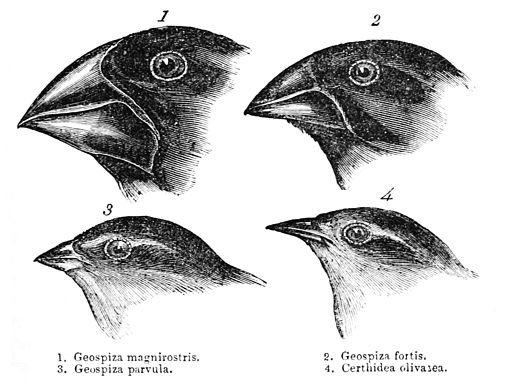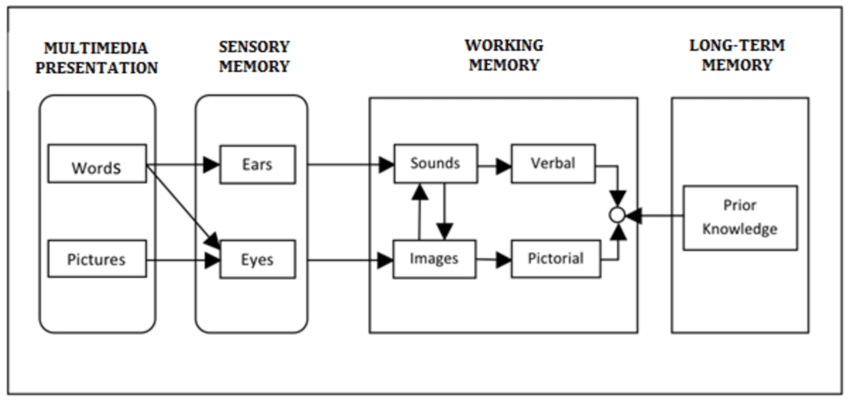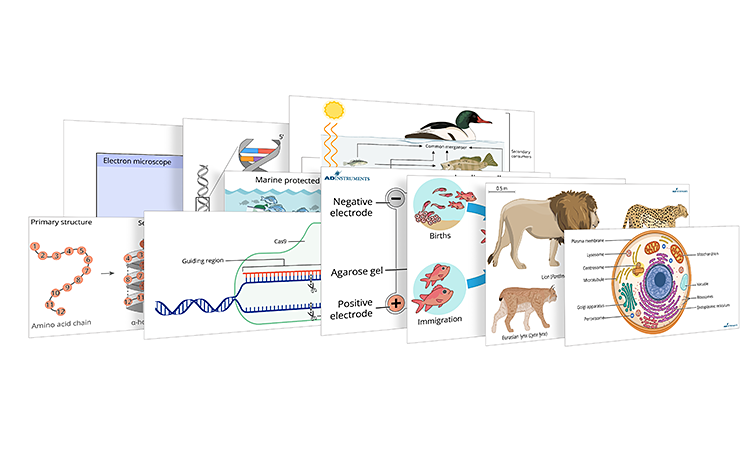Images are a great way of breaking up unwieldy chunks of text. When putting together a text-heavy handout, or a dense lecture slide, it can be tempting to throw in a visual element to ease the strain on the eyes. But the quality of the visual information you include is just as important as the text.
We've put together a collection of 10 free, high-quality biology illustrations to help support your teaching. Download the images below.
Multimodal learning is key
Sometimes words are inefficient. Images, when used well, can amplify our understanding of a new concept. If Darwin had described the shape of Galapagos finch beaks without the aid of his now famous drawings, it would’ve been significantly harder for his peers to grasp his meaning. The same rules apply today. Presenting information in multiple modalities (i.e. auditory, visual, gestural, textual, etc.) has been shown time and again to reduce ambiguities and improve student learning.
But why does it work? The jury is still out on that one, however, most theories point toward multimodal teaching as being more naturalistic.

Charles Darwin's illustrations of natural selection at work in Galapagos finches.
When you’re explaining a concept or telling a story in a non-academic setting you might impart auditory, visual, and gestural information without even thinking about it. If you’re giving directions or explaining an abstract concept, you might draw a diagram to emphasize particular points or communicate information that is too difficult to efficiently explain in words. We habitually use these modalities to bolster the information we’re providing and build a more complete understanding of the topic.
Two of the more prominent multimodal learning theories, Paivio’s Dual Coding Theory (1986) and Mayer’s Cognitive Theory of Multimedia Learning (2005), explore how these modalities work together to boost memory.
Paivio's Dual-Coding Theory
Paivio proposed that, when faced with a multi-modal stimulus, each modality is processed and stored separately from the others. Stored information is categorized; for instance, every bird song would be lumped under the conceptual banner of ‘bird’. These modality-dependent categories (auditory, visual, textual) are thought to cross-reference one another: the song of a bluebird, for example, links to an image of a bluebird, or textual information about the singing rituals of the bluebird. The idea is that multiple modalities, when presented together, will be more effectively stored and retrieved from memory.
Mayer’s Cognitive Theory of Multimedia Learning
Mayer takes a more cognition-focussed approach, proposing that in order to learn we must create a mental model of the information in our working memory. We do this by performing three cognitive tasks:
- selecting modality-specific information from our long-term memory and from the materials presented to us,
- organizing that information, and
- integrating those elements into a new or updated mental model.
This is a cyclical process, with constant gathering, organizing, and integrating.
These are both quite simplistic summaries of learning and information processing, but what they highlight is that visual and textual information complement one another. When you include an image in learning materials, it shouldn’t just repeat the same information you’ve laid out in the text; some overlap is helpful, but everything you include needs to be building on existing information in order to be beneficial. When you think about it like that, it makes a lot of sense why text and images together improve learning; they’re providing more information for those growing mental models.

Mayer's Cognitive Theory of Multimedia Learning highlights the importance of working memory in learning.
The limitations of working memory
Unfortunately, working memory is a finite resource, and if you’re not careful you might find your students reaching maximum capacity before they’ve got the full picture. In their review of the literature surrounding learning and cognitive load, Ghanbari et al. found that working memory was the main bottleneck for learning.
In Cognitive Load Theory (CLT), the mental resources used to generate and update mental models are called ‘Germane Load’. Good education, according to CLT, optimizes germane load by minimizing internal cognitive load (the effort of learning the topic) and extraneous cognitive load (deciphering the information as it is presented).
According to Ghanbari et al. this means focusing on and mastering one concept at a time, and utilizing all of the tools at your disposal. Each piece of information should allow students to further build up their mental model. High-quality imagery is a key part of this process, reducing both internal and extraneous cognitive load by efficiently presenting information and breaking up dense text.
High-quality imagery
So, you just need to make sure you’re including images in your teaching. Seems easy, right? Not quite. As I’m sure you’re aware, finding suitable scientific pictures can be far from easy in biology education. Misleading, over-simplified, and out-of-date biology images are widespread. Including incorrect information gets in the way of that all-important mental model formation, or can result in your students building their models around incorrect assumptions.
Good biology pictures are out there, though - it can just take a little while to find them. We thought we’d speed up the process by giving you a selection of 10 free high-quality illustrations and diagrams from our Lt Biology Collection. Simply select the 'Download Images' button below to receive 10 biological images to help your students wrap their heads around everything from DNA to population dynamics. Enjoy!
Related resources:
Lesson Design: How to promote the six core competencies for undergraduate biology students »
Talking Teaching: Engaging remote biology students »
Helping your students to bloom: Fostering higher-level thinking in introductory biology »
References:
- Gilbert, John K. "The role of visual representations in the learning and teaching of science: An introduction." Asia-Pacific Forum on Science Learning & Teaching, vol. 11, no.1, 2010.
- Haghani, Fariba, et al. “A Systematized Review of Cognitive Load Theory in Health Sciences Education and a Perspective from Cognitive Neuroscience.” Journal of Education and Health Promotion, vol. 9, no. 1, 2020, p. 176. DOI: 10.4103/jehp.jehp_643_19.
- Quillin, Kim, and Stephen Thomas. “Drawing-to-Learn: A Framework for Using Drawings to Promote Model-Based Reasoning in Biology.” CBE—Life Sciences Education, edited by Mary Lee Ledbetter, vol. 14, no. 1, 2015, p. es2. DOI: 10.1187/cbe.14-08-0128.
- Sagoo, Mandeep Gill, et al. “Online Assessment of Applied Anatomy Knowledge: The Effect of Images on Medical Students’ Performance.” Anatomical Sciences Education, vol. 14, no. 3, 2020, pp. 342–51. DOI: 10.1002/ase.1965.
- Tippett, Christine D. “What Recent Research on Diagrams Suggests about Learning with Rather than Learning from Visual Representations in Science.” International Journal of Science Education, vol. 38, no. 5, 2016, pp. 725–46. DOI: 10.1080/09500693.2016.1158435.
